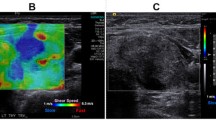Abstract
Over the last two decades, microwave imaging (MWI) has been investigated as a novel imaging and diagnostics technique for detection of breast cancer. A number of early small-scale clinical experiments have clearly illustrated the potential of the technology, while also revealing some significant remaining challenges. These technical challenges must be addressed before MWI is accepted as a viable alternative (or complement) to other medical imaging techniques such as X-ray, ultra-sound, and magnetic resonance imaging.
Access provided by Autonomous University of Puebla. Download chapter PDF
Similar content being viewed by others
Keywords
These keywords were added by machine and not by the authors. This process is experimental and the keywords may be updated as the learning algorithm improves.
Over the last two decades, microwave imaging (MWI) has been investigated as a novel imaging and diagnostics technique for detection of breast cancer. A number of early small-scale clinical experiments have clearly illustrated the potential of the technology, while also revealing some significant remaining challenges. These technical challenges must be addressed before MWI is accepted as a viable alternative (or complement) to other medical imaging techniques such as X-ray, ultra-sound, and magnetic resonance imaging.
The purpose of this book is two-fold: firstly, we wish to present the background and theory of the most basic MWI and diagnostic techniques at a level which is accessible to graduate-level newcomers to the field; secondly, we wish to give an overview of the most recent and relevant developments in the field of MWI. In this way, we hope to bridge the gap between more easily accessible overviews of MWI, e.g. [2–5, 7], which presents broad overview of results and techniques, but lacks the detail required to gain a complete understanding of the systems, and the very detailed texts such as [1, 6] which attempt to include a complete treatise of the theory, but can appear technically daunting to novices in the field. It should be noted that MWI for breast cancer detection is a growing field of research, and as such many new and promising research groups are continually emerging. As such, this book can only present work from the established leading research groups at the time of publishing.
The book begins by describing breast anatomy and cancer development. Both of these topics are addressed from the perspective of MWI. Next, a summary of both historical and more recent studies of the dielectric properties of breast tissue is presented, and how these studies contribute to the current understanding of the microwave breast imaging problem is discussed.
Chapter 3 examines the underlying principles of Microwave Tomography, an imaging technique where the coarse dielectric profile of the breast is reconstructed. In this chapter, the scattering problem is presented, in the form of integral equations, and methods for solving the non-linear imaging problem are described.
Chapter 4 is focused on Confocal Microwave Imaging or radar-based imaging. Rather than seeking to reconstruct the dielectric profile of the breast, radar-based methods aim to identify the presence and location of significant dielectric scatterers within the breast. In this chapter, a representative range of algorithms are described and evaluated on simulated data-sets, and general trends are drawn in the context of different levels of dielectric heterogeneity. The emerging idea of contrast enhanced imaging is also considered.
Apart from using reflected microwave energy to reconstruct images of the breast, the tumour reflections (or radar target signatures) may contain additional information on the shape and size of the tumour. This information could potentially be used for tumour classification. In Chap. 5, Tumour Classification, different numerical models are first presented, which can be used to realistically mimic the size, shape, and growth patterns of breast tumours in electromagnetic numerical models. Next, a range of tumour classification algorithms based on the radar target signatures of tumours is presented.
Finally, the book concludes with a snap-shot of current Experimental Systems. For clarity, these systems have been categorised into three groups: operational, tomographic, and radar-based. The main characteristics of each system are presented and how they have been evaluated is discussed. Importantly, references to the most recent studies are included, rather than the earliest, which are often found to be obsolete.
Overall, this book provides a comprehensive but accessible map of the microwave imaging and diagnostic research, and will act as a useful introductory guide for novice researchers in this promising field of medical imaging.
References
Chew W (1995) Waves and fields in inhomogeneous media. IEEE Press, New York
Fear E (2005) Microwave imaging of the breast. Techn in Cancer Research and Treatment 4(1):69–82
Fear EC, Hagness SC, Meaney PM, Okoniewski M, Stuchly MA (2002) Enhancing breast tumor detection with near-field imaging. IEEE Microwave Magazine 3(1):48–56
Hassan AM, El-Shenawee M (2011) Review of electromagnetic techniques for breast cancer detection. IEEE Reviews in Biomedical Engineering 4:103–118, DOI 10.1109/RBME. 2011.2169780
Nikolova N (2011) Microwave imaging for breast cancer. IEEE Microwave Magazine 12(7):78–94, DOI 10.1109/MMM.2011.942702
Pastorino M (2010) Microwave Imaging. Wiley, Hoboken, NJ
Paulsen KD, Meaney PM, Gilman LC (2005) Alternative breast imaging four model-based approaches. Springer, New York, NY
Author information
Authors and Affiliations
Corresponding author
Editor information
Editors and Affiliations
Rights and permissions
Copyright information
© 2016 Springer International Publishing Switzerland
About this chapter
Cite this chapter
Mohr, J.J., O’Halloran, M., Conceição, R.C. (2016). Introduction. In: Conceição, R., Mohr, J., O'Halloran, M. (eds) An Introduction to Microwave Imaging for Breast Cancer Detection. Biological and Medical Physics, Biomedical Engineering. Springer, Cham. https://doi.org/10.1007/978-3-319-27866-7_1
Download citation
DOI: https://doi.org/10.1007/978-3-319-27866-7_1
Published:
Publisher Name: Springer, Cham
Print ISBN: 978-3-319-27865-0
Online ISBN: 978-3-319-27866-7
eBook Packages: Physics and AstronomyPhysics and Astronomy (R0)




